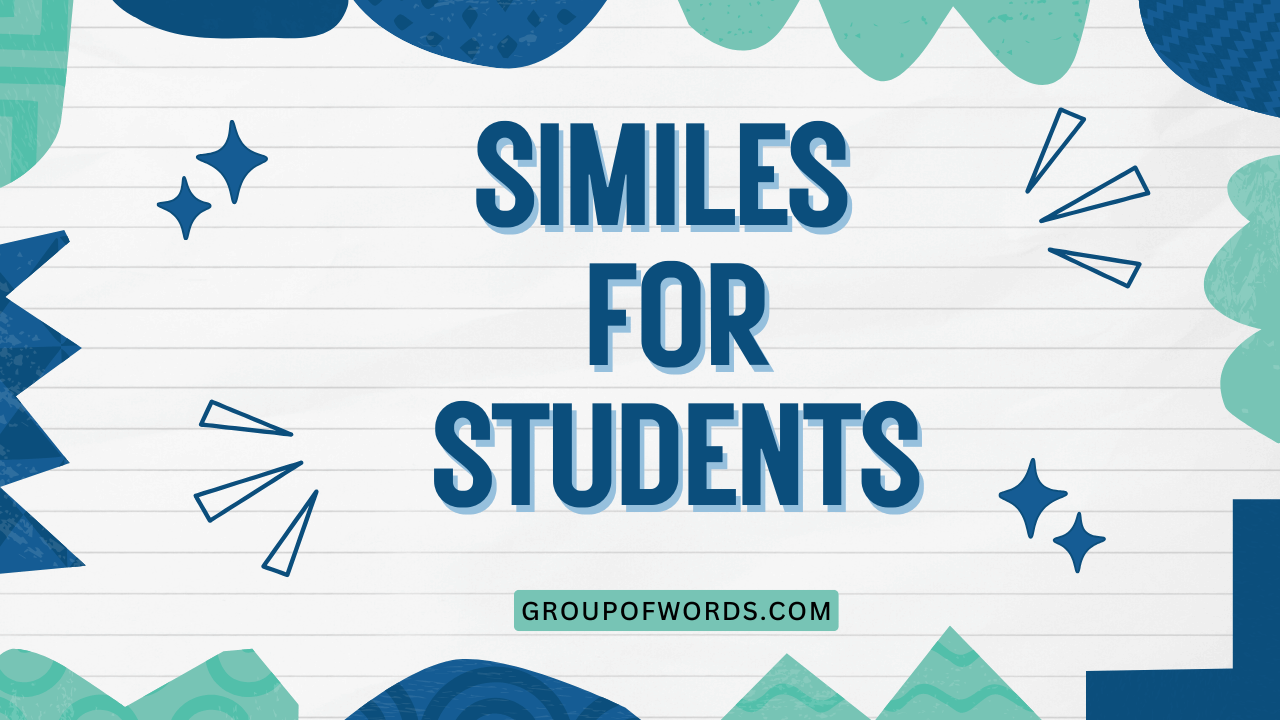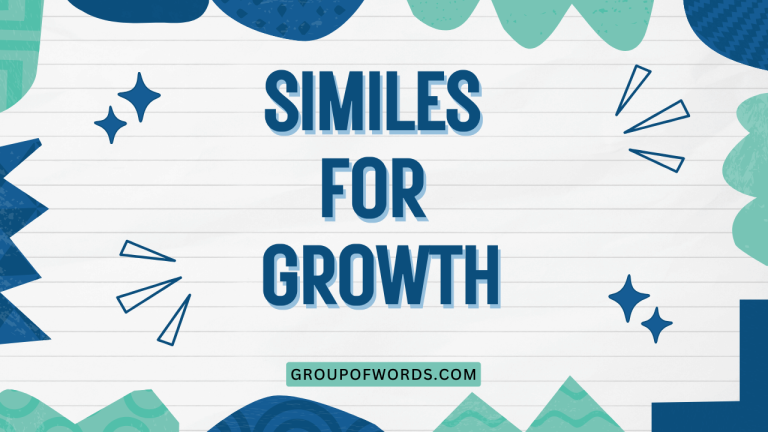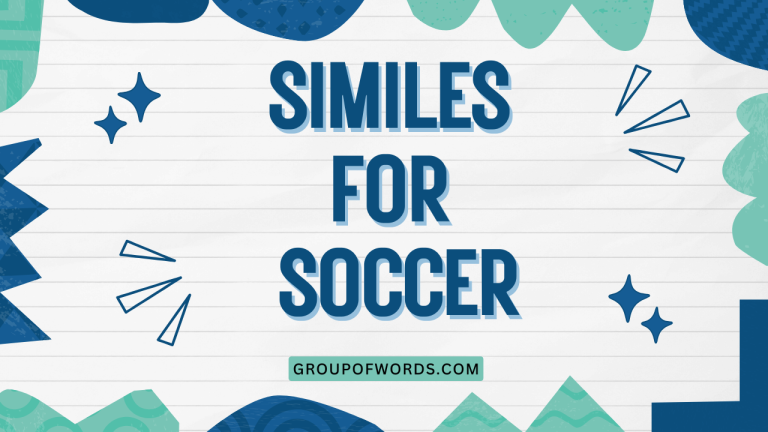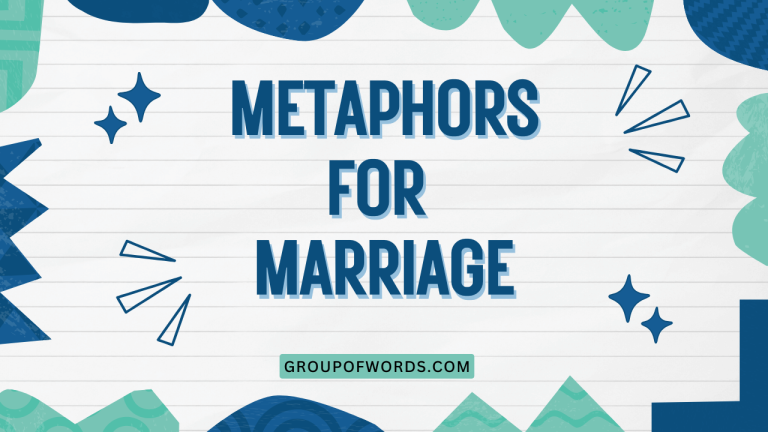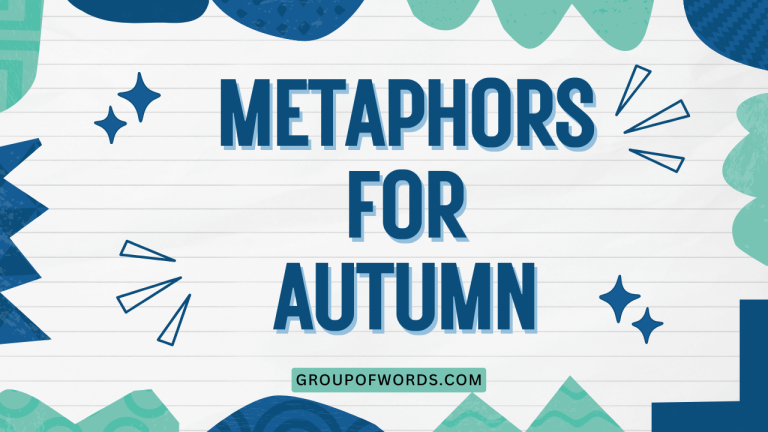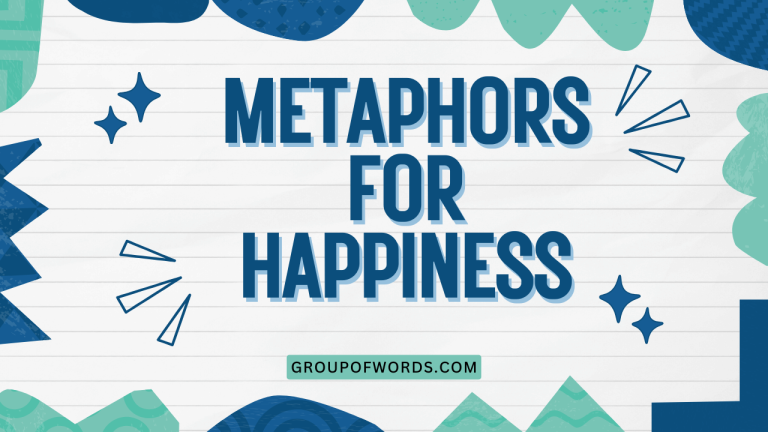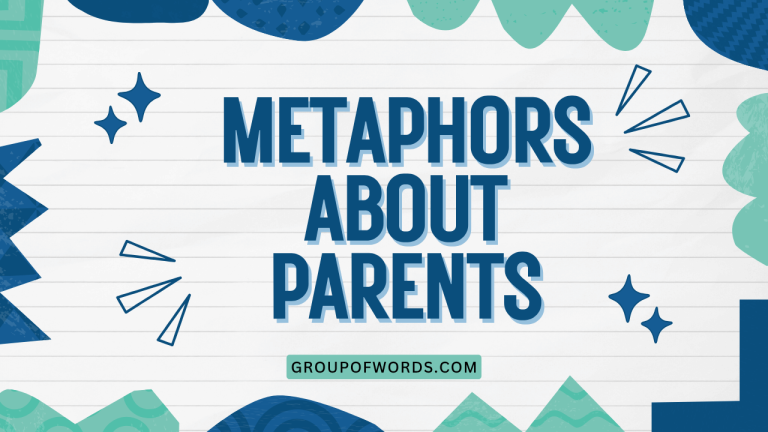Mastering Similes: Your Ultimate Guide to Figurative Language
Similes are powerful tools in the English language that allow us to create vivid comparisons and enhance our writing and speech. By understanding how similes work, you can add depth, imagery, and emotional resonance to your communication.
This comprehensive guide is designed for students of all levels, from beginners to advanced learners, providing a clear and structured approach to mastering similes. Whether you’re looking to improve your creative writing, ace your grammar exams, or simply express yourself more effectively, this article will equip you with the knowledge and skills you need.
This article explores the definition, structure, types, and usage of similes, complete with numerous examples and practice exercises. We’ll also address common mistakes and delve into advanced topics to help you refine your understanding.
Get ready to unlock the potential of similes and transform your language skills!
Table of Contents
- Definition of a Simile
- Structural Breakdown of Similes
- Types of Similes
- Examples of Similes
- Usage Rules for Similes
- Common Mistakes with Similes
- Practice Exercises
- Advanced Topics in Similes
- Frequently Asked Questions
- Conclusion
Definition of a Simile
A simile is a figure of speech that directly compares two different things, typically using the words “like” or “as.” The purpose of a simile is to create a vivid image, emphasize a particular quality, or make a description more interesting and relatable. Similes help us understand something unfamiliar by relating it to something we already know.
They are a fundamental part of figurative language and are widely used in literature, poetry, and everyday conversation.
Unlike metaphors, which imply that one thing is another, similes explicitly state a comparison. This direct comparison makes similes easier to identify and understand, especially for those new to figurative language. The effectiveness of a simile lies in the strength and clarity of the comparison it creates. A well-chosen simile can transform a mundane description into something memorable and impactful.
Similes are not merely decorative; they serve a crucial function in communication. They can clarify complex ideas, evoke emotions, and add depth to our understanding of the world around us.
By mastering the art of using similes, you can significantly enhance your writing and speaking skills.
Structural Breakdown of Similes
The basic structure of a simile includes three key components: the **subject** (the thing being described), the **linking word** (“like” or “as”), and the **object of comparison** (the thing the subject is being compared to). Understanding this structure is crucial for creating effective and grammatically correct similes.
The subject and object of comparison must share a common characteristic or quality that the simile highlights.
For example, in the simile “The runner was as fast as a cheetah,” the subject is “the runner,” the linking word is “as,” and the object of comparison is “a cheetah.” The shared quality being emphasized is speed. The simile creates a vivid image of the runner’s speed by associating it with the well-known swiftness of a cheetah.
The linking words “like” and “as” are interchangeable in many similes, but there are subtle differences in their usage. “As” is often used when comparing qualities or characteristics, while “like” can be used more broadly to indicate similarity.
However, these distinctions are not always strict, and both words can effectively create strong comparisons.
Let’s break down the structure with some more examples:
- She is as graceful as a swan. (Subject: She, Linking Word: as, Object of Comparison: a swan, Shared Quality: Gracefulness)
- The snow was like a soft blanket. (Subject: The snow, Linking Word: like, Object of Comparison: a soft blanket, Shared Quality: Softness)
- He eats like a pig. (Subject: He, Linking Word: like, Object of Comparison: a pig, Shared Quality: Messiness/Greed)
Types of Similes
While all similes share the same basic structure and function, they can be categorized based on the type of comparison they create. Understanding these different types can help you choose the most effective simile for your particular purpose and add nuance to your writing.
Positive Similes
Positive similes are used to compare something to something else that is generally considered to be positive or desirable. These similes often highlight qualities such as beauty, strength, intelligence, or kindness.
They are used to create a favorable impression or to emphasize the positive aspects of the subject being described.
For example, “She is as radiant as the sun” is a positive simile because it compares her to the sun, which is associated with warmth, light, and beauty. Positive similes can be particularly effective in praise, flattery, or when trying to create a positive and uplifting tone.
Negative Similes
Negative similes, on the other hand, compare something to something that is generally considered to be negative or undesirable. These similes often highlight qualities such as ugliness, weakness, stupidity, or cruelty.
They are used to create a negative impression or to emphasize the negative aspects of the subject being described.
For example, “He is as stubborn as a mule” is a negative simile because it compares him to a mule, which is associated with obstinacy and inflexibility. Negative similes can be effective in criticism, satire, or when trying to create a negative and critical tone.
Ironic Similes
Ironic similes are used to create a contrast between what is said and what is actually meant. These similes often use positive comparisons to describe something negative, or vice versa, to create a humorous or sarcastic effect.
The effectiveness of an ironic simile lies in the listener’s or reader’s ability to recognize the underlying irony.
For example, “He is as sharp as a marble” is an ironic simile because it compares him to a marble, which is not sharp at all. The irony lies in the fact that the simile is intended to suggest that he is not intelligent or perceptive.
Ironic similes can be a powerful tool for satire, humor, and social commentary.
Examples of Similes
To truly master the art of using similes, it is essential to study a wide range of examples. The following sections provide numerous similes organized by category, illustrating the different ways similes can be used to create vivid descriptions and enhance communication.
General Similes
This table provides a variety of general similes that can be used in various contexts. These examples showcase the versatility of similes and their ability to add depth and imagery to your writing.
| Simile | Explanation |
|---|---|
| As busy as a bee | Describes someone who is very active and hardworking. |
| As cold as ice | Describes something that is very cold or someone who is emotionally distant. |
| As clear as crystal | Describes something that is very easy to understand or see through. |
| As brave as a lion | Describes someone who is very courageous and fearless. |
| As light as a feather | Describes something that is very weightless and easy to carry. |
| As quiet as a mouse | Describes someone or something that is very silent and unobtrusive. |
| As strong as an ox | Describes someone who is very powerful and robust. |
| As wise as an owl | Describes someone who is very knowledgeable and insightful. |
| As gentle as a lamb | Describes someone who is very kind and compassionate. |
| As fierce as a tiger | Describes someone who is very aggressive and determined. |
| As free as a bird | Describes someone who is unconstrained and independent. |
| As happy as a clam | Describes someone who is very content and joyful. |
| As hungry as a wolf | Describes someone who is very ravenous and eager to eat. |
| As innocent as a dove | Describes someone who is pure and harmless. |
| As playful as a kitten | Describes someone who is full of energy and fun-loving. |
| As proud as a peacock | Describes someone who is very vain and boastful. |
| As slippery as an eel | Describes someone who is evasive and difficult to catch. |
| As smooth as silk | Describes something that is very soft and refined. |
| As stubborn as a mule | Describes someone who is very obstinate and unwilling to change. |
| As swift as an arrow | Describes something that is very fast and direct. |
| As tall as a tree | Describes something that is very high and imposing. |
| As timid as a rabbit | Describes someone who is very shy and fearful. |
| As tough as nails | Describes someone who is very resilient and unyielding. |
| As white as snow | Describes something that is very pure and clean. |
| As yellow as the sun | Describes something that is bright and cheerful. |
Similes Describing Appearance
This table focuses on similes that are used to describe someone’s physical appearance. These similes can help you create a more vivid and detailed image of a person in your writing.
| Simile | Explanation |
|---|---|
| Her eyes were like sparkling diamonds. | Describes eyes that are bright and beautiful. |
| His hair was as white as snow. | Describes hair that is completely white. |
| She was as thin as a rail. | Describes someone who is very slender. |
| He was built like a brick house. | Describes someone who is very sturdy and strong. |
| Her skin was as smooth as silk. | Describes skin that is soft and flawless. |
| His smile was like sunshine. | Describes a smile that is warm and radiant. |
| She moved like a gazelle. | Describes someone who is graceful and agile. |
| He stood as tall as a tree. | Describes someone who is very tall and imposing. |
| Her voice was like velvet. | Describes a voice that is smooth and soothing. |
| His face was as red as a beet. | Describes a face that is flushed and embarrassed. |
| Her dress flowed like water. | Describes a dress that moves gracefully. |
| His beard was like a tangled bush. | Describes a beard that is unkempt and wild. |
| She had eyes like a hawk. | Describes someone with sharp and keen eyesight. |
| His hands were as rough as sandpaper. | Describes hands that are coarse and calloused. |
| Her laughter was like music. | Describes laughter that is pleasant and melodious. |
| He was as pale as a ghost. | Describes someone who is very white and sickly. |
| Her cheeks were like roses. | Describes cheeks that are pink and healthy. |
| His gaze was as sharp as a knife. | Describes a look that is piercing and intense. |
| She walked like a queen. | Describes someone who walks with grace and confidence. |
| He was as round as a ball. | Describes someone who is overweight and spherical. |
| Her hair shone like gold. | Describes hair that is bright and radiant. |
| His skin was as dark as night. | Describes skin that is deeply pigmented. |
| She was as delicate as a flower. | Describes someone who is fragile and beautiful. |
| He was as strong as an oak. | Describes someone who is robust and resilient. |
| Her presence was like a warm embrace. | Describes someone who is comforting and welcoming. |
Similes Describing Behavior
This table provides similes that are used to describe someone’s behavior or actions. These similes can help you convey a person’s personality and habits in a more engaging way.
| Simile | Explanation |
|---|---|
| He eats like a horse. | Describes someone who eats a lot. |
| She sings like an angel. | Describes someone who sings beautifully. |
| He works like a dog. | Describes someone who works very hard. |
| She runs like the wind. | Describes someone who runs very fast. |
| He sleeps like a log. | Describes someone who sleeps soundly. |
| She fights like a tiger. | Describes someone who fights fiercely. |
| He argues like a lawyer. | Describes someone who is skilled at arguing. |
| She dances like a dream. | Describes someone who dances gracefully. |
| He swims like a fish. | Describes someone who swims well. |
| She talks like a parrot. | Describes someone who talks incessantly. |
| He follows like a shadow. | Describes someone who closely follows another. |
| She leads like a general. | Describes someone who is a strong leader. |
| He plans like a strategist. | Describes someone who is methodical and strategic. |
| She learns like a sponge. | Describes someone who absorbs information quickly. |
| He spends like water. | Describes someone who spends money lavishly. |
| She hides like a fugitive. | Describes someone who is secretive and elusive. |
| He watches like a hawk. | Describes someone who is observant and vigilant. |
| She listens like a therapist. | Describes someone who is attentive and empathetic. |
| He jokes like a comedian. | Describes someone who is funny and entertaining. |
| She cries like a baby. | Describes someone who cries easily and uncontrollably. |
| He negotiates like a diplomat. | Describes someone who is skilled at negotiation. |
| She perseveres like a marathon runner. | Describes someone who is determined and resilient. |
| He creates like an artist. | Describes someone who is imaginative and inventive. |
| She organizes like a librarian. | Describes someone who is meticulous and orderly. |
| He reacts like a robot. | Describes someone who is unemotional and predictable. |
Similes Describing Emotions
This table focuses on similes that are used to describe emotions. These similes can help you express feelings in a more evocative and relatable way.
| Simile | Explanation |
|---|---|
| He was as happy as a lark. | Describes someone who is very cheerful and joyful. |
| She was as sad as a willow. | Describes someone who is very melancholic and sorrowful. |
| He was as angry as a hornet. | Describes someone who is very irate and agitated. |
| She was as scared as a mouse. | Describes someone who is very frightened and timid. |
| He was as nervous as a long-tailed cat in a room full of rocking chairs. | Describes someone who is very anxious and uneasy. |
| She felt like a fish out of water. | Describes someone who feels uncomfortable and out of place. |
| He was as excited as a kid in a candy store. | Describes someone who is very thrilled and eager. |
| She felt like she was walking on clouds. | Describes someone who feels euphoric and blissful. |
| He was as calm as a still pond. | Describes someone who is very serene and composed. |
| She felt like her heart was breaking. | Describes someone who feels profound sadness and grief. |
| He burned with jealousy like a raging fire. | Describes someone who experiences intense envy. |
| She felt as light as a feather with relief. | Describes someone who feels liberated and unburdened. |
| He was as numb as ice after the shock. | Describes someone who feels emotionally detached and unresponsive. |
| She glowed with pride like a beacon. | Describes someone who feels immense satisfaction and accomplishment. |
| He was as lost as a ship without a sail. | Describes someone who feels confused and directionless. |
| She felt like she was drowning in despair. | Describes someone who feels overwhelmed by hopelessness. |
| He was as eager as a student on the first day of school. | Describes someone who is very enthusiastic and curious. |
| She felt like she was floating on air with happiness. | Describes someone who feels extremely joyful and elated. |
| He was as restless as a hummingbird. | Describes someone who is energetic and fidgety. |
| She felt as empty as a hollow shell. | Describes someone who feels devoid of emotion and purpose. |
| He was as content as a cat by the fire. | Describes someone who feels perfectly satisfied and comfortable. |
| She felt as heavy as lead with guilt. | Describes someone who feels burdened by remorse. |
| He was as surprised as a deer caught in headlights. | Describes someone who feels shocked and bewildered. |
| She felt as vulnerable as a newborn. | Describes someone who feels exposed and defenseless. |
| He was as determined as a mountain climber. | Describes someone who is resolute and unwavering. |
Similes Describing Objects
This table provides similes that are used to describe objects. These similes can help you bring inanimate objects to life in your writing and create a more immersive reading experience.
| Simile | Explanation |
|---|---|
| The car was as fast as a rocket. | Describes a car that is very quick. |
| The house was like a palace. | Describes a house that is grand and luxurious. |
| The rain fell like tears. | Describes rain that is gentle and sorrowful. |
| The moon was like a silver coin. | Describes a moon that is bright and round. |
| The road stretched out like a ribbon. | Describes a road that is long and winding. |
| The clouds were like cotton candy. | Describes clouds that are soft and fluffy. |
| The wind howled like a wolf. | Describes wind that is fierce and wild. |
| The city sparkled like diamonds. | Describes a city that is vibrant and glittering. |
| The fire crackled like popcorn. | Describes a fire that is lively and energetic. |
| The stars shone like tiny lights. | Describes stars that are bright and twinkling. |
| The river flowed like liquid glass. | Describes a river that is smooth and reflective. |
| The mountain stood like a giant. | Describes a mountain that is imposing and majestic. |
| The book was like a portal to another world. | Describes a book that is immersive and captivating. |
| The music was like a sweet dream. | Describes music that is pleasant and soothing. |
| The silence was like a heavy blanket. | Describes silence that is oppressive and stifling. |
| The darkness was like velvet. | Describes darkness that is soft and enveloping. |
| The cake tasted like heaven. | Describes a cake that is delicious and delightful. |
| The snow fell like confetti. | Describes snow that is light and festive. |
| The waves crashed like thunder. | Describes waves that are powerful and resounding. |
| The fog hung like a shroud. | Describes fog that is dense and concealing. |
| The building loomed like a fortress. | Describes a building that is imposing and secure. |
| The scent was like a memory. | Describes a scent that is evocative and nostalgic. |
| The fabric felt like a caress. | Describes fabric that is soft and gentle. |
| The painting was like a window to the past. | Describes a painting that is historical and revealing. |
| The coffee was as black as night. | Describes coffee that is very dark and strong. |
Usage Rules for Similes
To use similes effectively, it’s important to follow a few key usage rules. These rules ensure that your similes are clear, impactful, and grammatically correct.
Pay close attention to the clarity of your comparisons, the appropriateness of your choices, and the overall impact of your similes on your writing or speech.
1. **Ensure Clarity:** The comparison should be easily understood by your audience. Avoid using obscure or unfamiliar objects of comparison.
The connection between the subject and the object of comparison should be evident.
2. **Use Appropriate Comparisons:** The comparison should be relevant and meaningful. Avoid using comparisons that are illogical or nonsensical.
The shared quality between the subject and the object of comparison should be significant.
3. **Avoid Clichés:** Try to avoid overused similes that have lost their impact. Instead, strive to create fresh and original comparisons that will capture your audience’s attention.
Common clichés include “as busy as a bee,” “as blind as a bat,” and “as strong as an ox.”
4. **Maintain Grammatical Correctness:** Ensure that your similes are grammatically correct. Use the correct form of the linking word (“like” or “as”) and ensure that the subject and object of comparison are properly connected.
For example, “She is as tall as him” is incorrect; it should be “She is as tall as he is.”
5. **Consider the Context:** The appropriateness of a simile depends on the context in which it is used. A simile that is effective in one situation may be inappropriate in another.
Consider your audience, the purpose of your communication, and the overall tone you are trying to create.
6. **Use Sparingly:** While similes can be a powerful tool, they should be used sparingly. Overusing similes can make your writing or speech seem contrived and unnatural.
Use similes only when they will truly enhance your communication.
7. **Be Specific:** The more specific and detailed your simile, the more effective it will be. Instead of saying “He was as fast as something,” try “He was as fast as a speeding bullet.” The more vivid and precise your comparison, the more impact it will have on your audience.
Common Mistakes with Similes
Even experienced writers and speakers sometimes make mistakes when using similes. Being aware of these common errors can help you avoid them and ensure that your similes are clear, effective, and grammatically correct.
Let’s review some frequent errors and how to correct them.
1. **Using Metaphors Instead of Similes:** Confusing similes with metaphors is a common mistake. Remember that similes use “like” or “as” to make a direct comparison, while metaphors imply that one thing is another.
* **Incorrect (Metaphor):** “He was a lion on the battlefield.”
* **Correct (Simile):** “He was as brave as a lion on the battlefield.”
2. **Using Incorrect Linking Words:** Using the wrong linking word can change the meaning or grammatical correctness of the simile.
* **Incorrect:** “She is beautiful than a rose.”
* **Correct:** “She is as beautiful as a rose.”
3. **Creating Unclear Comparisons:** The comparison should be easily understood. Avoid using obscure or unrelated objects of comparison.
* **Incorrect:** “The task was like Tuesday.” (What does Tuesday have to do with the task?)
* **Correct:** “The task was as difficult as climbing Mount Everest.”
4. **Overusing Similes:** Using too many similes in a short space can make your writing seem cluttered and contrived.
* **Incorrect:** “The sun was like a golden coin. The sky was as blue as the ocean.
The clouds were like cotton balls.”
* **Correct:** “The sun shone brightly in the blue sky, scattered clouds drifting lazily like cotton.”
5. **Using Clichés:** Overused similes can make your writing seem unoriginal and predictable.
* **Incorrect:** “He was as busy as a bee.”
* **Correct:** “He was working tirelessly, like a clock that never stops ticking.”
6. **Making Illogical Comparisons:** The comparison should make sense and be relevant to the subject.
* **Incorrect:** “The book was as heavy as a song.” (Books have physical weight; songs do not.)
* **Correct:** “The book was as heavy as a brick.”
7. **Grammatical Errors:** Ensure that the simile is grammatically correct, especially in terms of subject-verb agreement and pronoun usage.
* **Incorrect:** “She is as tall as me.”
* **Correct:** “She is as tall as I am.”
Practice Exercises
To solidify your understanding of similes, complete the following practice exercises. These exercises will help you identify, complete, and create your own similes.
Exercise 1: Identifying Similes
Identify the similes in the following sentences and explain what two things are being compared.
| Question | Answer |
|---|---|
| 1. The snow was like a white blanket covering the city. | Simile: “The snow was like a white blanket.” Comparison: Snow and a white blanket. |
| 2. Her voice is as smooth as silk. | Simile: “Her voice is as smooth as silk.” Comparison: Her voice and silk. |
| 3. The children ran through the field. | No simile present. |
| 4. He eats like a pig. | Simile: “He eats like a pig.” Comparison: He and a pig (eating habits). |
| 5. The stars twinkled like diamonds in the sky. | Simile: “The stars twinkled like diamonds.” Comparison: Stars and diamonds. |
| 6. The news hit him like a ton of bricks. | Simile: “The news hit him like a ton of bricks.” Comparison: The news and a ton of bricks (impact). |
| 7. She is as graceful as a swan. | Simile: “She is as graceful as a swan.” Comparison: She and a swan. |
| 8. The sun is bright today. | No simile present. |
| 9. The old house stood silent, like a forgotten sentinel. | Simile: “The old house stood silent, like a forgotten sentinel.” Comparison: The old house and a forgotten sentinel. |
| 10. He was as stubborn as a mule. | Simile: “He was as stubborn as a mule.” Comparison: He and a mule. |
Exercise 2: Completing Similes
Complete the following similes by filling in the missing words.
| Question | Answer |
|---|---|
| 1. As blind as a _____. | As blind as a bat. |
| 2. As quiet as a _____. | As quiet as a mouse. |
| 3. As light as a _____. | As light as a feather. |
| 4. As cold as _____. | As cold as ice. |
| 5. As brave as a _____. | As brave as a lion. |
| 6. As clear as _____. | As clear as crystal. |
| 7. As gentle as a _____. | As gentle as a lamb. |
| 8. As slippery as an _____. | As slippery as an eel. |
| 9. As proud as a _____. | As proud as a peacock. |
| 10. As smooth as _____. | As smooth as silk. |
Exercise 3: Writing Your Own Similes
Write your own similes based on the following prompts.
| Question | Answer |
|---|---|
| 1. Describe the sound of rain. | The rain sounded like a gentle whisper against the windowpane. |
| 2. Describe the feeling of being nervous. | I felt as nervous as an actor before opening night. |
| 3. Describe a beautiful sunset. | The sunset was as colorful as a painter’s palette. |
| 4. Describe a crowded room. | The room was as packed as a can of sardines. |
| 5. Describe a difficult task. | The task was as challenging as solving a complex puzzle. |
| 6. Describe the taste of chocolate. | The taste of chocolate was like a sweet, warm hug. |
Advanced Topics in Similes
For those looking to deepen their understanding of similes, there are several advanced topics to explore. These topics delve into the nuances of simile usage, including the creation of complex comparisons, the use of similes in different genres, and the cultural variations in simile usage.
1. **Extended Similes:** An extended simile is a simile that is developed over several lines or even an entire paragraph. Instead of a simple, one-sentence comparison, the writer elaborates on the similarities between the subject and the object of comparison, creating a more detailed and impactful image.
2. **Similes in Poetry:** Poetry often uses similes to create vivid imagery and evoke emotions. Poets may use unconventional or unexpected comparisons to challenge the reader’s perceptions and create a deeper understanding of the poem’s themes.
3. **Similes in Prose:** Prose writers use similes to add depth and texture to their descriptions. Whether it’s a novel, short story, or essay, similes can help bring the writing to life and make it more engaging for the reader.
4. **Cultural Variations:** The effectiveness of a simile can depend on the cultural background of the audience. A comparison that is easily understood in one culture may be confusing or meaningless in another.
Understanding these cultural variations is essential for effective cross-cultural communication.
5. **Original Similes:** The most impactful similes are often those that are original and unexpected. Strive to create comparisons that are fresh and imaginative, rather than relying on overused clichés.
The more unique your simile, the more likely it is to capture your audience’s attention and leave a lasting impression.
Frequently Asked Questions
What is the difference between a simile and a metaphor?
A simile is a direct comparison using “like” or “as,” while a metaphor implies that one thing is another without using those words. Similes are generally easier to identify and understand.
Can a simile be a cliché?
Yes, a simile can become a cliché if it is overused and loses its original impact. It’s best to avoid clichés and strive for fresh, original comparisons.
How do I make my similes more effective?
To make your similes more effective, ensure they are clear, relevant, and specific. Avoid clichés, use appropriate comparisons, and consider the context in which you are using them.
Is it okay to use similes in formal writing?
Yes, similes can be used in formal writing, but they should be used judiciously. Ensure that the similes enhance your writing and do not detract from the overall tone and purpose.
How can I improve my simile-writing skills?
To improve your simile-writing skills, practice regularly, read widely, and pay attention to the similes used by other writers. Experiment with different types of comparisons and seek feedback on your work.
Conclusion
Mastering similes is a valuable skill that can significantly enhance your writing and speaking abilities. By understanding the definition, structure, types, and usage rules of similes, you can create vivid comparisons, evoke emotions, and add depth to your communication.
Remember to avoid common mistakes, practice regularly, and strive for originality in your comparisons. With dedication and effort, you can unlock the full potential of similes and transform your language skills.
